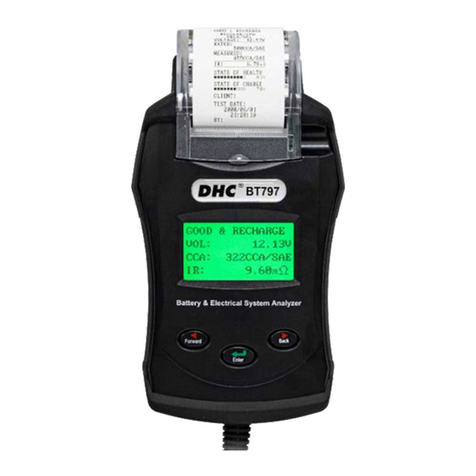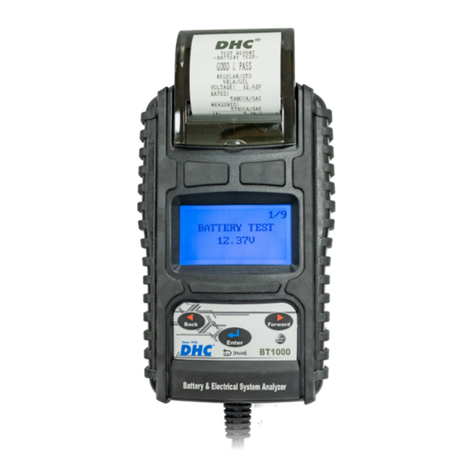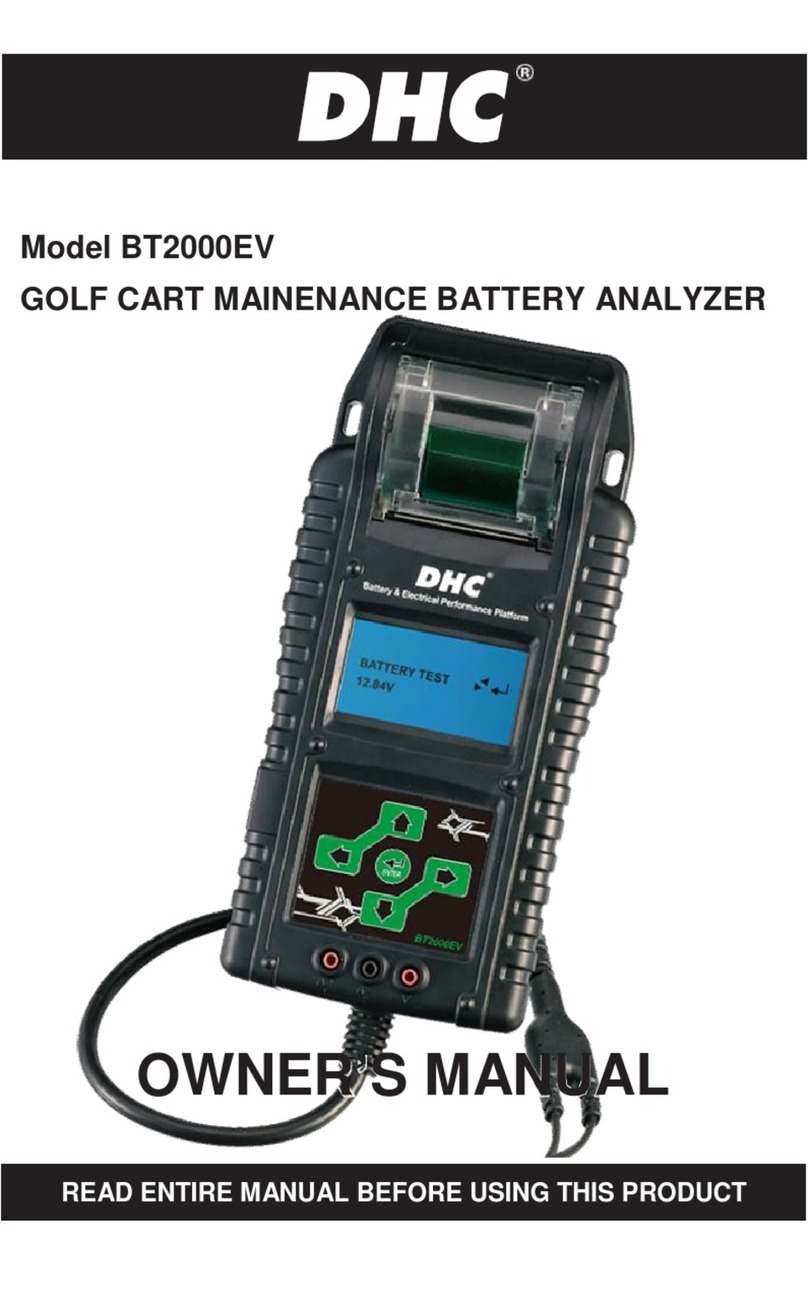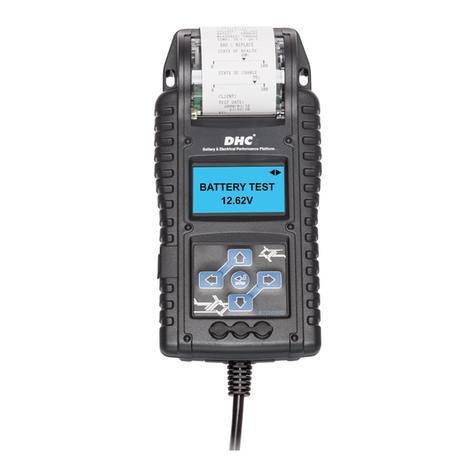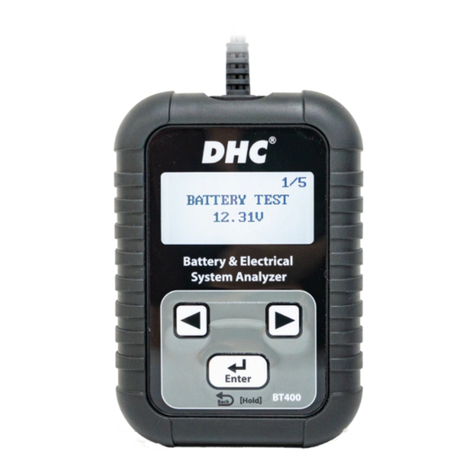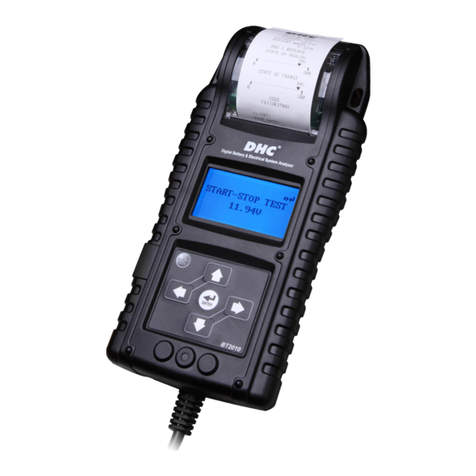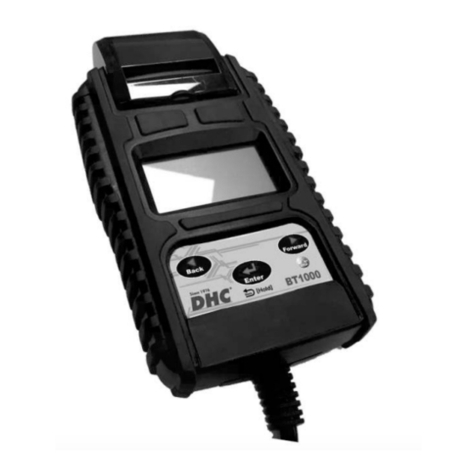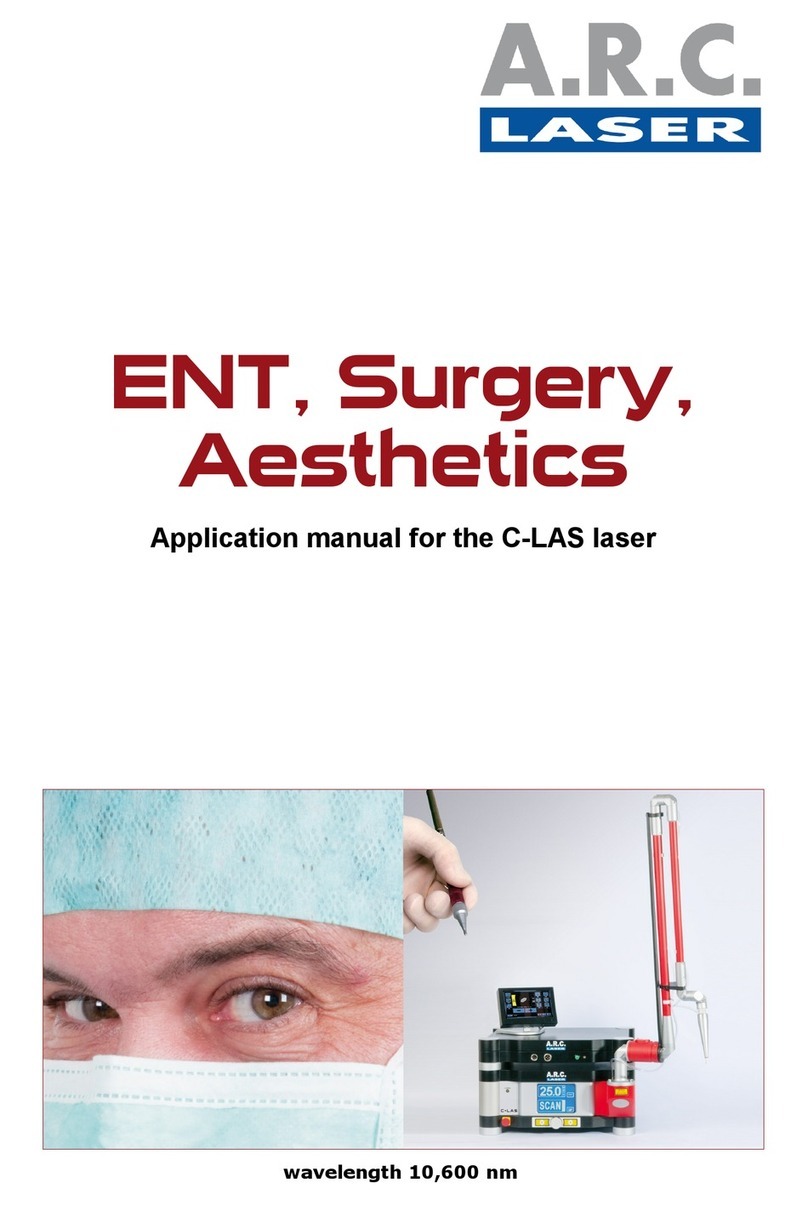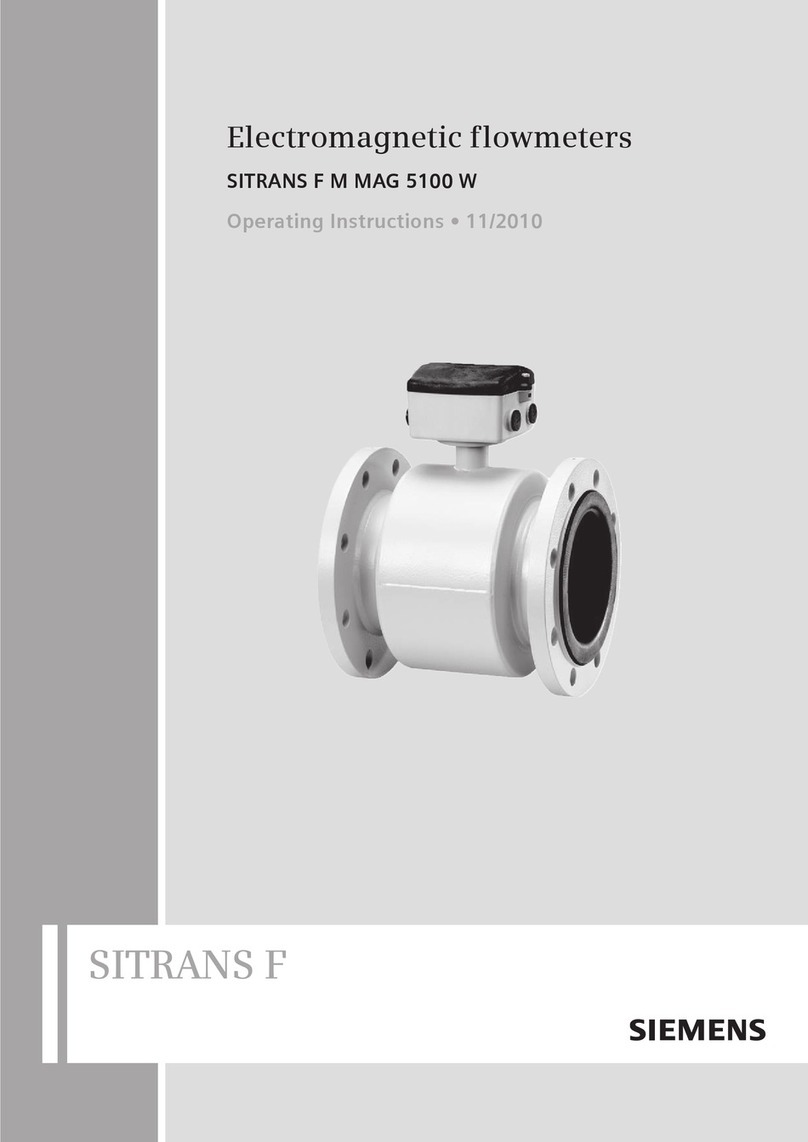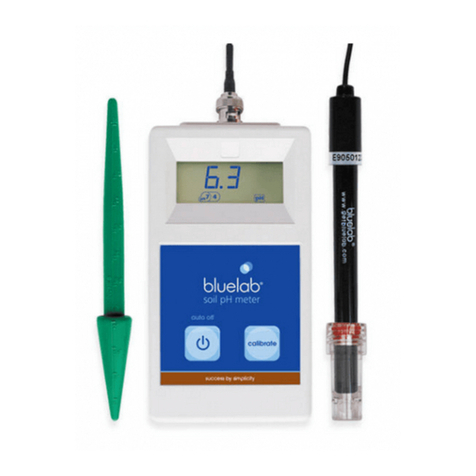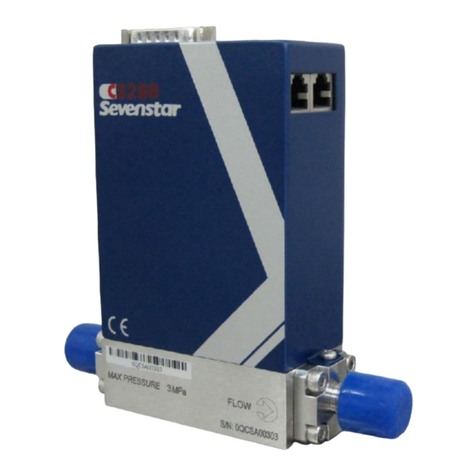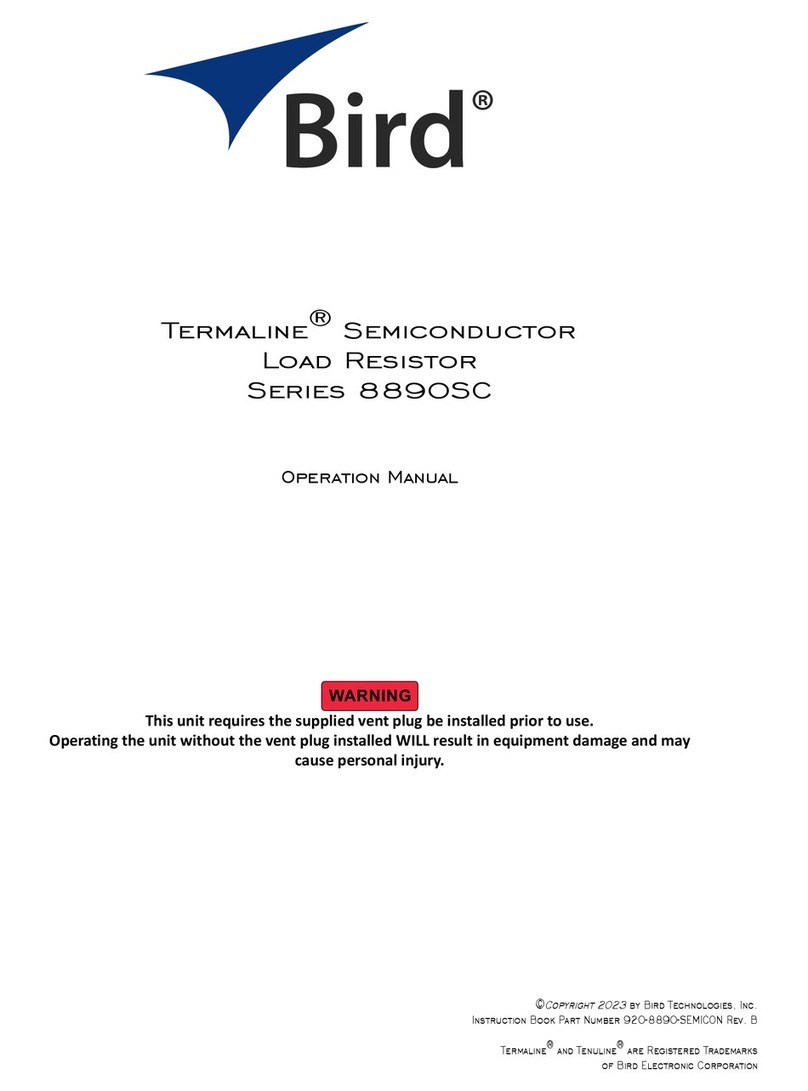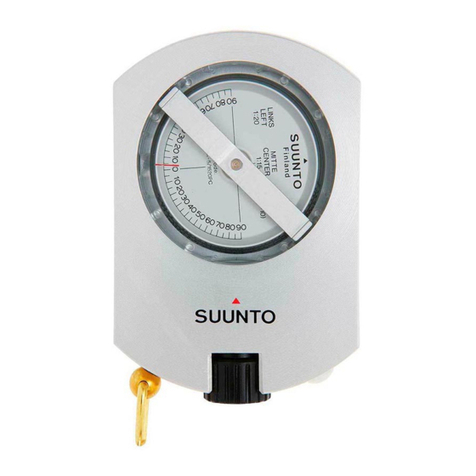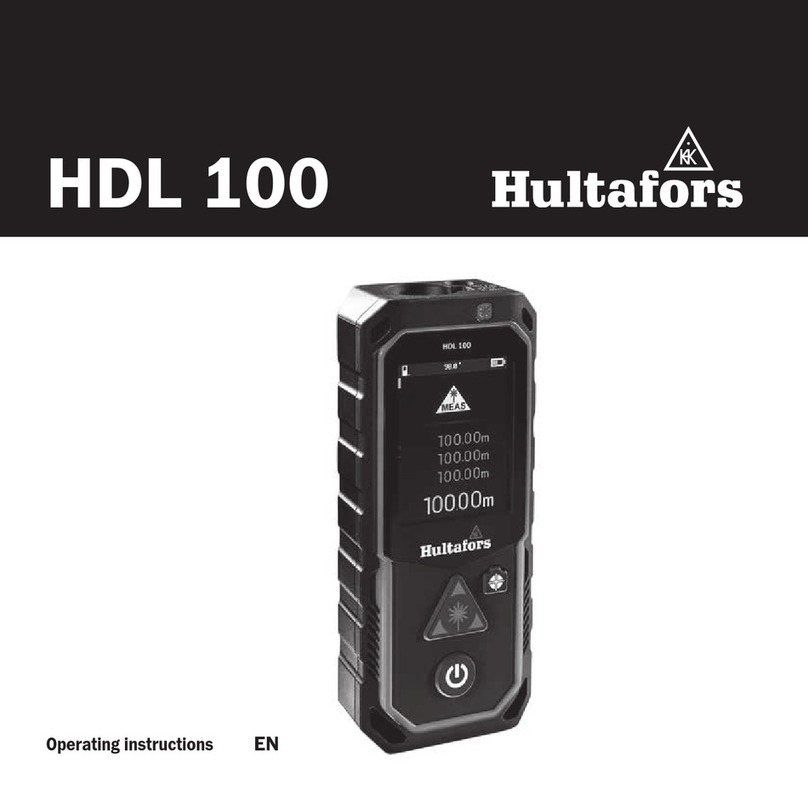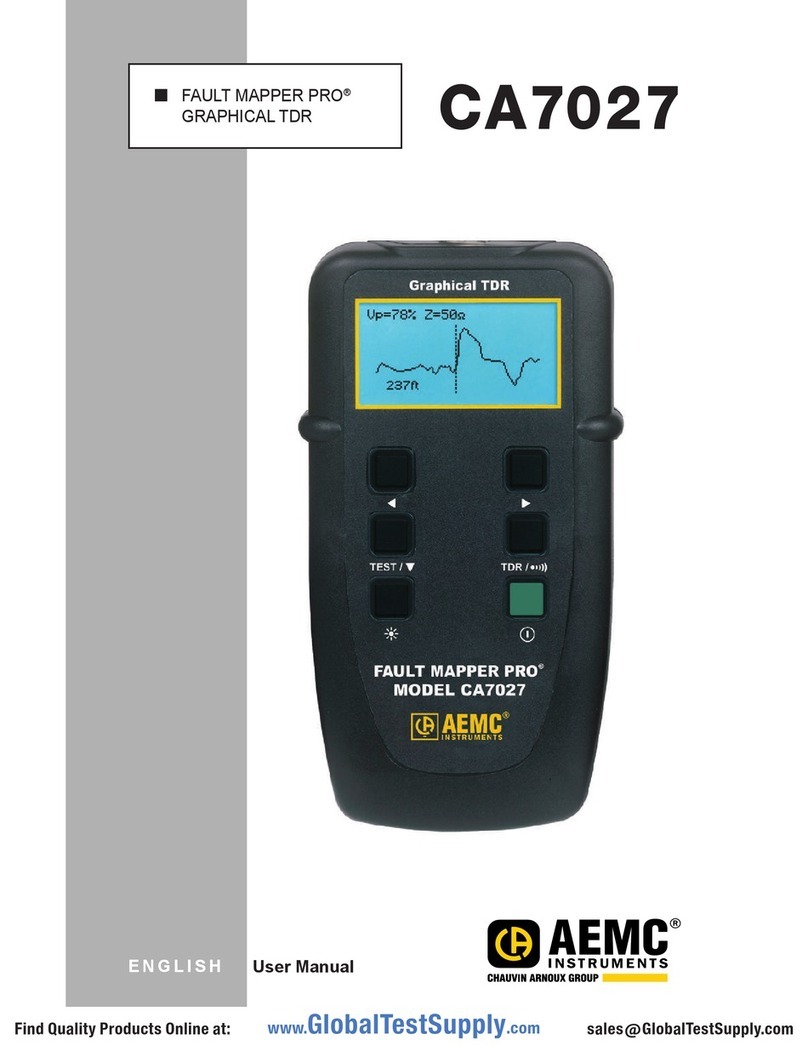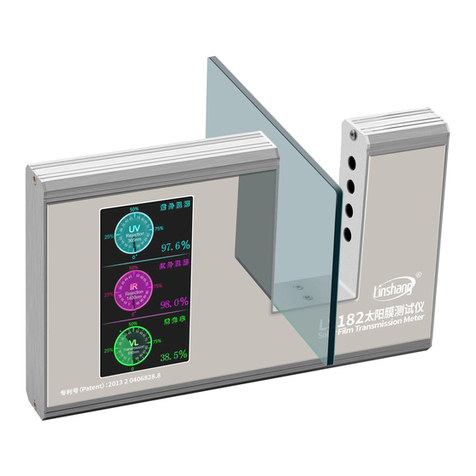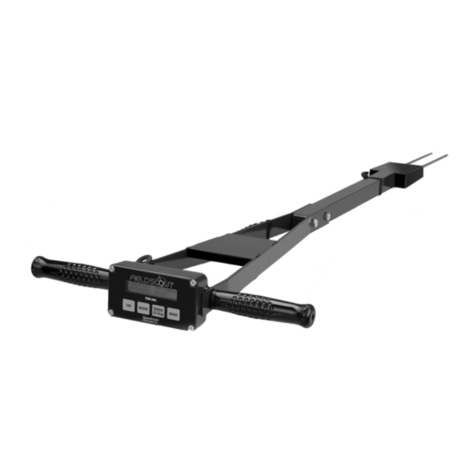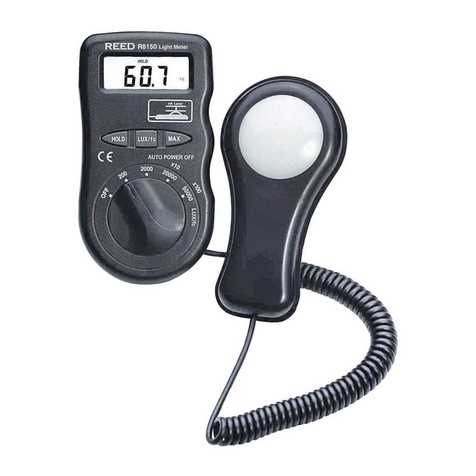DHC BT2100 User manual

READ ENTIRE MANAUAL BEFORE USING THIS PRODUCT
Model BT2100
BATTERY & ELECTRICAL SYSTEM ANALYZER

- 1 -
TEST PROCEDURES/ OPERATING INSTRUCTIONS
IMPORTANT:
1. For testing 6 and 12 volt batteries, and 12 and 24 volt charging
systems. (ONLY 12 volt for START & STOP battery test)
2. Suggested operation range 32°F(0°C) to 122°F(50°C) in ambient
temperature.
○
1
○
2
○
3
○
4
○
5
○
6
○
7
Temperature Sensor
Display
Directional Keys
USB Port
Voltmeter Jack
AMP Clamp Jack
Printer
BT2100

- 2 -
WARNING:
Pursuant to California Proposition 65, this product contains chemicals
known to the State of California to cause cancer and birth defects or
other reproductive harm. Wash hands after handling.
1. Working in the vicinity of a lead acid battery is dangerous. Batteries
generate explosive gases during normal battery operation. For this
reason, it is of utmost importance, if you have any doubt, that each
time before using your tester, please read these instructions very
carefully.
2. To reduce risk of battery explosion, follow these instructions and
those published by the battery manufacturer and manufacturer of
any equipment you intend to use in the vicinity of the battery.
Observe cautionary markings on these items.
3. Do not expose the tester to rain or snow.
PERSONAL SAFETY PRECAUTIONS:
1. Someone should be within range of your voice or close enough to
come to your aid when you work near a lead acid battery.
2. Have plenty of fresh water and soap nearby in case battery acid
contacts skin, clothing or eyes.
3. Wear safety glasses and protective clothing.
4. If battery acid contacts skin or clothing, wash immediately with soap
and water. If acid enters eye, immediately flood eye with running cold
water for at least ten minutes and get medical attention immediately.
5. NEVER smoke or allow a spark or flame in vicinity of battery or engine.
6. Be extra cautious to reduce risk of dropping a metal tool onto the
battery. It could spark or short-circuit the battery or other electrical
parts and could cause an explosion.
7. Remove personal metal items such as rings, bracelets, necklaces and
watches when working with a lead acid battery. It can produce a short
circuit current high enough to weld a ring or the like to metal causing
a severe burn.

- 3 -
PREPARING TO TEST
1. Be sure area around battery is well ventilated while battery is being
tested.
2. Clean battery terminals. Be careful to keep corrosion from coming in
contact with eyes.
3. Inspect the battery for cracked or broken case or cover. If battery is
damaged, do not use tester.
4. If the battery is not sealed maintenance free, add distilled water in
each cell until battery acid reaches level specified by the manufacturer.
This helps purge excessive gas from cells. Do not overfill.
5. If necessary to remove battery from vehicle to test, always remove
ground terminal from battery first. Make sure all accessories in the
vehicle are off to ensure you do not cause any arcing.
1. Before you test a battery in a vehicle, turn off the ignition, all
accessories and loads. Close all the vehicle doors and the trunk lid.
2. Make sure you have put 6pcs 1.5V batteries into the battery chamber.
Oxyride batteries are not recommended because of the initial 1.7 Volt
output. If the 1.5V battery runs out of power, screen will show
“REPLACE INTERNAL BATTERY” or” POWER LOW”. Replace those 4pcs
1.5V batteries before starting the test.
Note that nothing will be seen on the display until the tester is
connected to a vehicle battery.
BEFORE TEST

- 4 -
3. Make sure the battery terminals are clean. Wire brush them if
necessary. Clamp the black load lead to the vehicle negative battery
terminal. Clamp the red load lead to the vehicle positive battery
terminal. Please clamp on the lead part of the terminal only. Clamping
on the iron part of the terminal will lead to wrong test results.
4. Paper load:
a. Open the clear cover.
b. Place a new paper roll in the compartment.
c. Put a short length of paper from the
compartment and press down the clear
cover to close.
1. Press the ◄ ► key to select START-STOP Test.
2. Press the ◄ ► key to select battery type:
a. AGM FLAT PLATE
b.EFB (ENHANCED FLOODED)
Press «ENTER» button to confirm choice.
3. Press the ◄ ► key to select battery rating :
CCA/SAE, EN, IEC, or DIN. Press «ENTER» button to
confirm choice.
START-STOP BATTERY TEST

- 5 -
4. Press the ◄ ► key to input the battery capacity:
SAE (CCA): 25~3,000
EN: 25~2,830
DIN: 25~1,685
IEC: 25~1,985
Press «ENTER» to begin test.
5. Press the◄ ► key to confirm the location of the
battery if a surface charge is detected, follow the
tester ‘s introductions to remove the surface
charge.
6. Testing battery.
7. Aim the “Temperature Measurement sensor”
2.5cm (1 inch) from the top or sides of the battery
case and press <<ENETR>>. Measured temperature
may vary by distance from the battery, under hood
conditions, and cabinet temperature.
8. Press the ◄ ► key to confirm if the battery has
been charged recently.
9. When the test is completed, the display shows the results as follows.
{Press the◄ ► key to select: Temperature, SOH (STATE OF HEALTH) ,
and SOC (STATE OF CHARGE)}.
(GREEN backlight)
The battery is good and capable of holding a
charge.
The battery is good but needs to be recharged.
GOOD & PASS
GOOD & RECHARGE
(GREEN backlight)

- 6 -
Battery is discharged, the battery condition
cannot be determined until it is fully charged.
Recharge & retest the battery.
The battery will not hold a charge. It should be
replaced immediately.
The battery has at least one cell short circuit. It
should be replaced immediately.
10. Add RO# and VIN#? YES or NO. Select YES to enter RO number and
vehicle plate number.
11. Press ENTER to print the result.
NOTE: Under certain conditions the follow messages may be displayed.
The tested battery is bigger than 3000 SAE (CCA) or
the connection is not established. Check the capacity
of the battery & make sure the clamps are properly connected.
LOAD ERROR
RECHARGE & RETEST
BAD & REPLACE
BAD CELL & REPLACE
(YELLOW backlight)
(RED backlight)
(RED backlight)

- 7 -
The connection between battery and cable set is
loosed, please check cable clamp.
Please change new AA batteries.
Please insert new paper row.
The voltage of tested battery is too high and cannot
be measured.
The voltage of tested battery is unstable Please switch
off the engine, wait for 90 second and retest.
CHECK CLAMP
INTERNAL BATTERY LOW
NO PAPER
VOLTAGE HIGH
VOLTAGE UNSTABLE

- 8 -
1. Press the ◄ ► key to select Battery Test.
2. Press the ◄ ► key to confirm the battery voltage.
3. Press the ◄ ► key to confirm if the battery has
been charged recently.
4. Press the ◄ ► key to select the battery type:
a. FLOODED
b.AGM FLAT PLATE
c. AGM SPIRAL
d.VRLA/GEL
Press «ENTER» to confirm choice.
5. Press the ◄ ► key to select battery rating:
CCA/SAE, EN, IEC or DIN. Press «ENTER» to confirm
choice.
6. Press the ◄ ► key to input the battery capacity:
• SAE (CCA):25~3,000
• EN:25~2,830
• DIN:25~1,685
• IEC:25~1,985
• JIS:Battery Type No.
Press «ENTER» to begin the test.
7. Press the ◄ ► key to confirm the location of the
battery if a surface charge is detected, follow the
tester ‘s instruction to remove the surface charge.
8. Testing battery.
BATTERY TEST

- 9 -
9. Aim the “Temperature Measurement sensor”
2.5cm (1 inch) from the top or sides of the battery
case and press <<ENETR>>. Measured
temperature may vary by distance from the battery, under hood
conditions, and cabinet temperature.
10. When the test is completed, the display shows the results as
following. {Press the◄ ► key to select: Temperature, SOH (STATE
OF HEALTH), and SOC (STATE OF CHARGE)}.
3
The battery is good and capable of holding a charge.
The battery is good but needs to be recharged.
Battery is discharged, the battery condition cannot
be determined until it is fully charged. Recharge &
retest the battery.
The battery will not hold a charge. It should be
replaced immediately.
The battery has at least one cell short circuit. It
should be replaced immediately.
11. Press ENTER button to enter RO number and vehicle plate number.
GOOD & PASS
GOOD & RECHARGE
RECHARGE & RETEST
BAD & REPLACE
BAD CELL & REPLACE

- 10 -
12. Press ENTER to print the result.
NOTE: Under certain conditions the follow messages may be displayed.
The tested battery is bigger than 3000 SAE (CCA) or the
connection is not established. Check the capacity of
the battery & make sure the clamps are properly
connected.
The connection between battery and cable set is
loosed, please check cable clamp.
Please change new AA batteries.
Please insert new paper row.
The voltage of tested battery is too high and cannot
be measured.
The voltage of tested battery is unstable Please switch
off the engine, wait for 90 second and retest.
LOAD ERROR
CHECK CLAMP
INTERNAL BATTERY LOW
NO PAPER
VOLTAGE HIGH
VOLTAGE UNSTABLE

- 11 -
1. Press the ◄ ► key to select Battery Test.
2. Turn off all vehicle accessory loads such as light, air conditioning, radio,
etc. before starting the engine.
3. When the engine is started, one of the three
results will be displayed along with the actual
measured result.
The system is showing normal draw. Press «ENTER»
to perform the charging system test.
The cranking voltage is below normal limits,
troubleshoot the starter with manufacturers
recommended procedure.
The cranking voltage is not detected.
SYSTEM TEST
CRANKING VOLTS NORMAL
CRANKING VOLTS LOW
CRANKING VOLTS NO DETECTED

- 12 -
4. If the cranking voltage is normal, press «ENTER» to begin charging
system test.
5. Press the «ENTER» key, you will view the following
screen.
6. Press the «ENTER» key, one of the three results will be displayed along
with the actual reading measured.
NOTE: Under certain conditions the follow messages may be displayed.
The alternator is not providing sufficient current to
the battery. Check the belts to ensure the alternator
is rotating with engine running. If the belts are
slipping or broken, replace the belts and retest.
Check the connections from the alternator to the battery. If the
connection is loose or heavily corroded, clean or replace the cable and
retest. If the belts and connections are in good condition, replace the
alternator.
The system is showing normal output from the
alternator, no problem is detected.
The voltage output from the alternator to the battery
exceeds the normal limits of a functioning regulator.
Check to ensure there is no loose connection and the
ground connection is normal. If there is no connection issue, replace the
regulator. Since most alternators have the regulator built-in, this will
require you to replace the alternator. The normal high limit of a typical
LOW CHARGING VOLTS WHEN TEST AT IDLE
CHARGING SYSTEM NORMAL WHEN TEST AT IDLE
HIGH CHARGING VOLTS WHEN TEST AT IDLE

- 13 -
automotive regulator is 14.7 volts +/- 0.05. Check manufacturer
specifications for the correct limit, as it will vary by vehicle type and
manufacturer.
7. Following the charging system at idle, press
«ENTER» for the charging system with
accessory loads. Turn on the heater blower to
high, high beam headlights, and rear defogger (If equipped). Do
not use cyclical loads such as air conditioning or windshield wipers.
8. When testing older model diesel engines, the
user need to run up the engine to 2500 rpm for
15 seconds. You will see the run engine up
instruction screen.
9. Press «ENTER» to look for the amount of ripple from the charging
system to the battery. One of two testing results will be displayed
along with the actual testing measured.
Diodes function well in the alternator / stator.
OR
One or more diodes in the alternator are not
functioning or there is stator damage. Check to
ensure the alternator mounting is affixed securely
and that the belts are in good shape and
functioning properly. If the mounting and belts
are good, replace the alternator.
10. Press the «ENTER» key to continue the charging system with
accessory loads. One of the three results will be displayed along with
the actual testing measured.
RIPPLE DETECTED NORMAL
EXCESS RIPPLE
DETECTED

- 14 -
The alternator is not providing sufficient current
for the system’s electrical loads and the charging
current for the battery. Check the belts to ensure
the alternator is rotating with the engine running.
If the belts are slipping or broken, replace the belts and retest. Check
the connections from the alternator to the battery. If the connection
is loose or heavily corroded, clean or replace the cable and retest. If
the belts and connections are in good working condition, replace the
alternator.
The system is showing normal output from the
alternator, no problem detected.
The voltage output from the alternator to the
battery exceeds the normal limits of a
functioning regulator. Check to ensure there are
no loose connections and that the ground connection is connected
properly. If there are no connection issues, replace the regulator.
Since most alternators have the regulator built-in, this will require you
to replace the alternator.
11. When the test is completed,
the display shows the results
as following.
12. Press ENTER to print the
result.
CHARGING SYSTEM LOW WHEN TEST WITH ACC. LOADS
CHARGING SYSTEM NORMAL WHEN TEST WITH ACC. LOADS
CHARGING SYSTEM HIGH WHEN TEST WITH ACC. LOADS

- 15 -
1. Press the ◄ ► key to select IR TEST.
2. Press the ◄ ► key to confirm the battery voltage.
3. Press the ◄ ► key to confirm if the battery has
been charged recently.
4. If the battery has NOT been
charged, please select “NO” to
recharge and retest the battery.
If the battery has been charged,
please select “YES” and proceed the test.
5. Aim the “Temperature Measurement sensor” 2.5cm (1 inch) from
the top or sides of the battery case and press
<<ENETR>>. Measured temperature may vary by
distance from the battery, under hood
conditions, and cabinet temperature.
6. Testing battery.
7. When the test is completed, the display shows the
results as following.
8. Press ENTER to print the result.
IR TEST

- 16 -
AM TEST
1. Install the 9V battery.
2. Connect Clamp Meter to the jack A on BT2100. Press POWER.
3. Press the button ZERO. Make sure the display reads zero.
4. Press the trigger to open the transformer jaws and clamp one
electrical wire.
5. Make sure the clamp jaw is perfectly closed.
6. Read the displayed value.
VM TEST
1. Connect Red Test Lead to the jack V on BT2100.
2. Use the test lead to touch a point within the network of the battery.
3. Read the displayed value.
NOTE: Do not test the volt more than 60V. It may damage the tester.
VM/AM TEST

- 17 -
Press the ◄ ► key to select Setting.
LCD BACKLIGHT
1. Press the directional keys to get to the LCD
BACKLIGHT.
2. Press the directional keys to adjust the brightness of the display.
3. Press ENTER and the display returns to the menu.
LANGUAGE SELECT
1. Press the directional keys to get to the LANGUAGE
SELECT display.
2. Press ENTER and the display will show the
language options. Press the directional keys to
select the language you want the tester to display.
3. Press ENTER and the display returns to the menu.
CLOCK SETTING
1. Press the directional keys to get to the CURRENT
DATE/TIME display.
2. Press ENTER and use virtual keyboard to adjust
YEAR/MONTH/DAY/HOUR/MINUTE/SECOND and
change the setting.
3. Press ENTER and the display returns to the menu.
CLEAR MEMORY
1. Press the directional keys to get to the CLEAR
MEMORY.
2. Select “NO” to delete the memory.
3. Press «ENTER» button and the display returns to the menu.
SETTING AND INFORMATION RETRIEVAL

- 18 -
INFORMATION
1. Press the directional keys to enter INFORMATION.
2. Use the direction key to input customized data.
3. Press «ENTER» button and the display returns to
the menu.
BLUETOOTH
1. Press the directional keys to enter BLUETOOTH.
2. Press ENTER and the display will show the
connection status.
3. Log in APP and use it to connect tester.
TEST COUNTER
1. Press the directional keys to enter TEST
COUNTER.
2. Press to find PRINT and print the test counter record.
3. Press ENTER to erase specific test counter
records.

- 19 -
Each BT2100 comes with a CD, including the driver of the software
installation DHC SYNC and its user guide.
PC NAVIGATION GUIDE
Connect BT2100 to PC
through the supplied USB lead.
Review the test data stored in the tester.
Table of contents
Other DHC Measuring Instrument manuals

